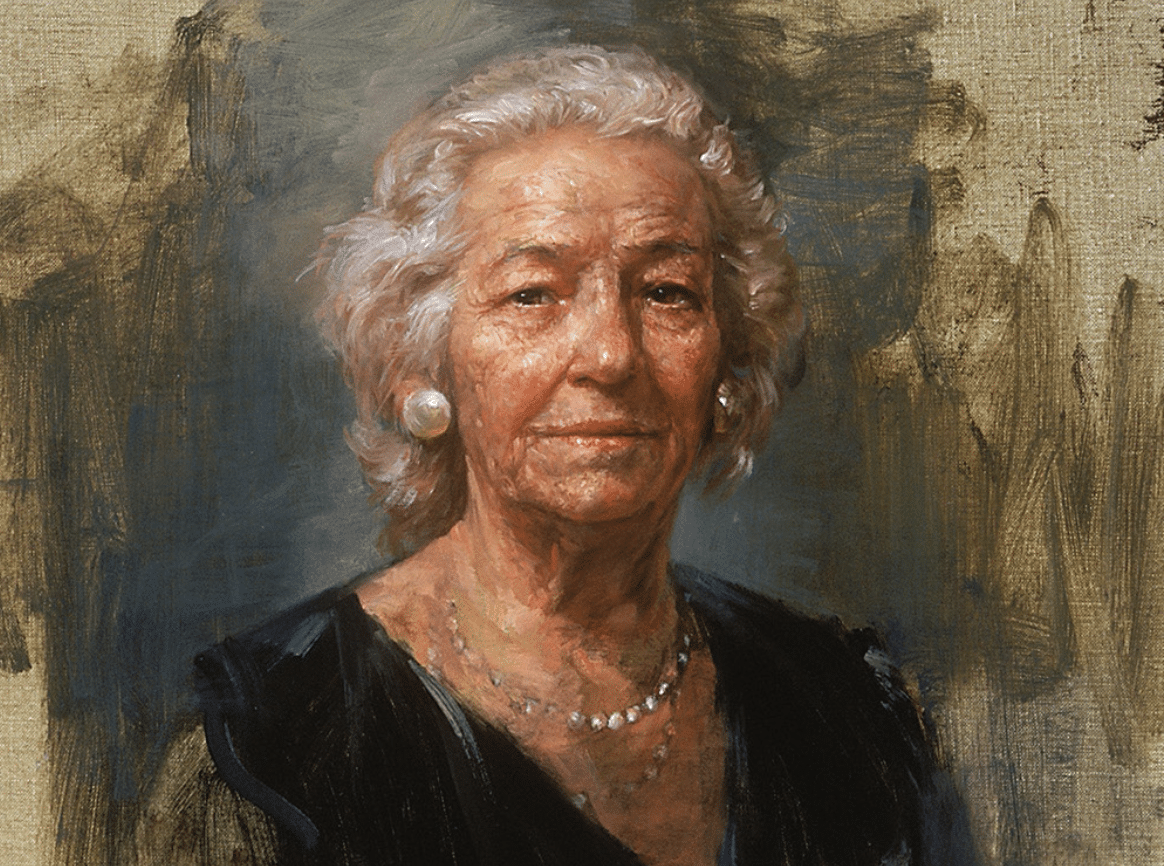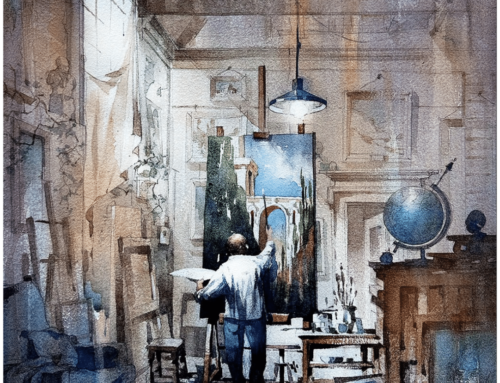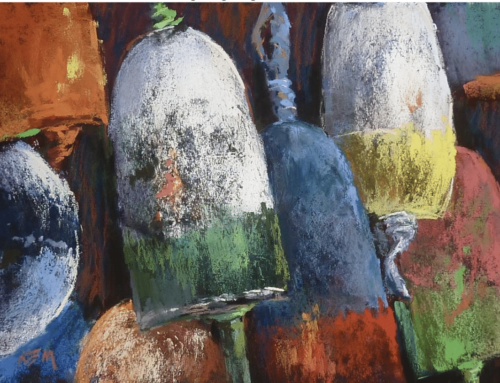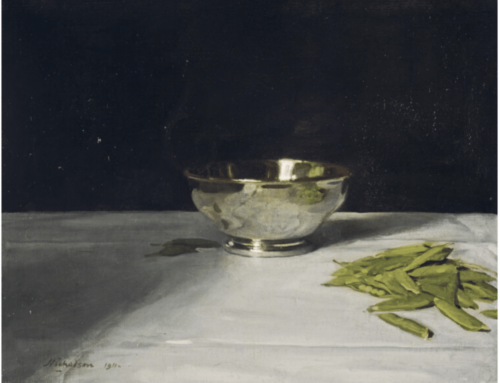Painting from life, whether it’s a portrait, the figure, or a plein air landscape, offers certain advantages over working from photos. However, using photo references makes it a lot easier to “make things look right.” So why put yourself through the torture of painting with nothing to go on but what you can pull together on the spot?
The main advantage (and curse) of working “live” is that it encourages an active engagement with your subject and your feelings about it. The photo just records what you saw, not so much the thoughts and feelings that made you want to paint it to being with. You can stay in and rely on memory for the initial feeling you had (and try not to be distracted by factual minutiae). Or you can work from that place of feeling in front of the motif, trying to prioritize feeling without losing sight of representation.
The latter choice involves a wealth of scary decisions, both conscious and felt, about what to focus on and why. From a technical point of view, you need to choose:
- what to leave out,
- how to handle color and temperature despite what’s “out there,”
- what to do with proportion,
- cropping,
- composition overall,
- how and where to move the eye, and
- what to flat out invent in the heat of the moment.
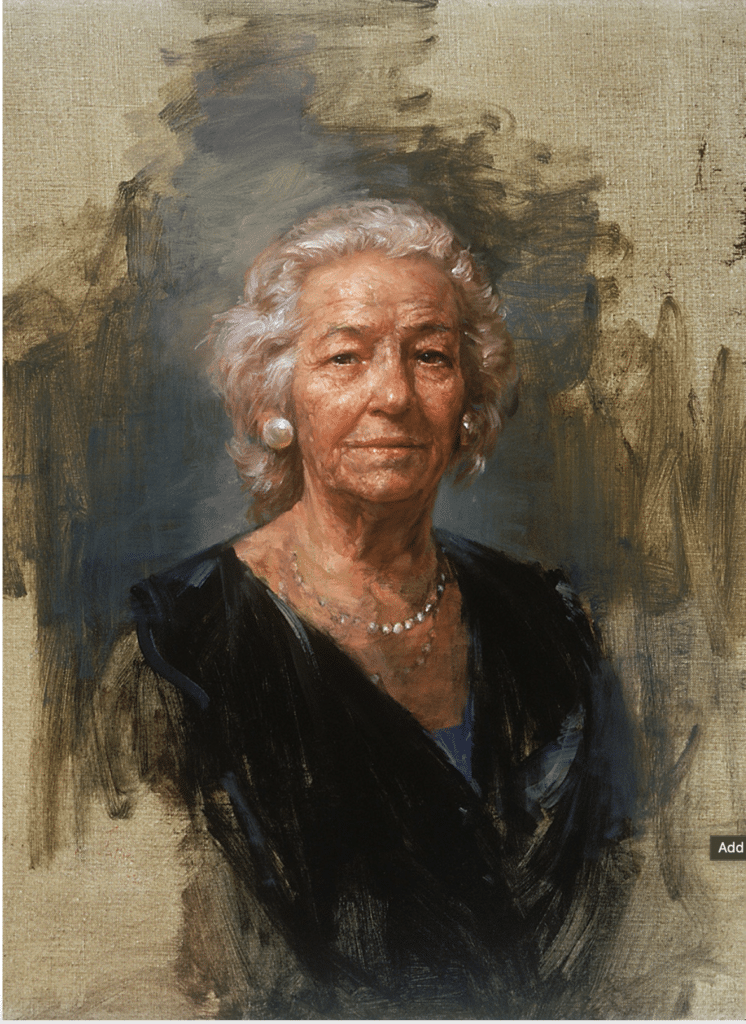
Because of all that, painting from life is one of the best ways to grow as an artist. Sure, it’s not easy to let go of the rope and skate off into the air. Painting from a photo makes it a lot easier to get things “right,” such as relational proportions and accurate lights and shadows. Perhaps it depends on whether the finished product or the learning experience matters to you more.
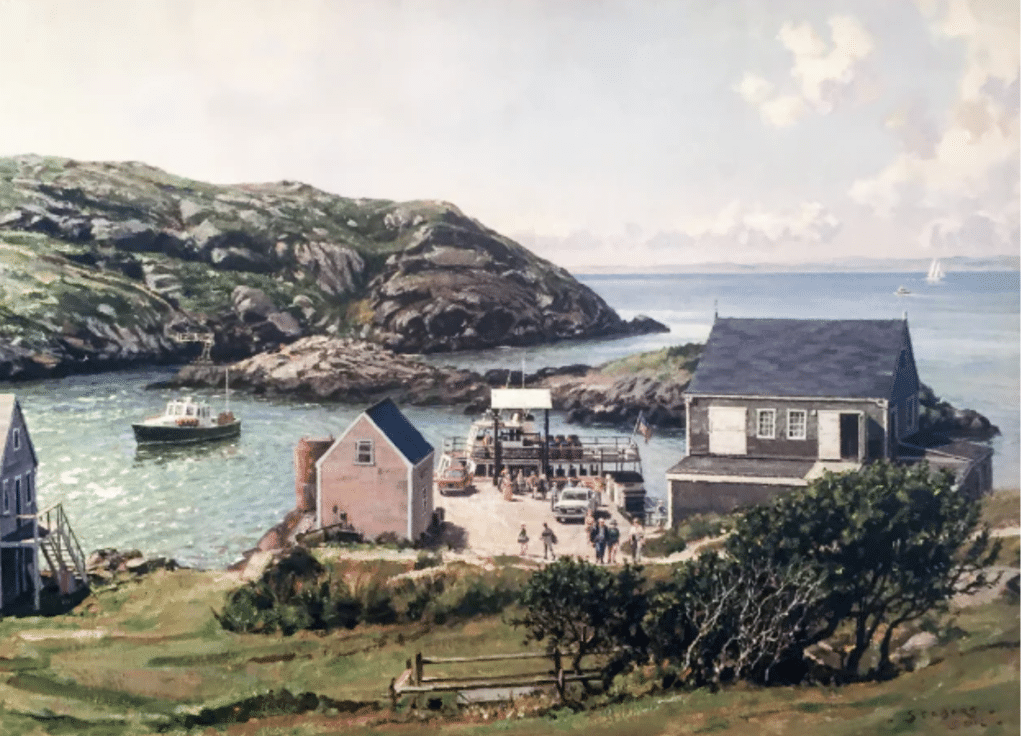
John Stobart, Monhegan, a View of the Landing from the Island Inn
For those willing to take the risks associated with working from life, American illustrator Dean Cornwell summed it up well: “Do what the camera can’t do – the camera can’t add the spiritual.” The sooner you get to that point as an artist the better, by whatever means necessary.
Many painters make use of both working from life and working in the studio in their practice, maybe even in the same painting. Unless you’re a purist (nothing wrong with that!) or following strict guidelines, a painting begun en plein air can often be touched up (i.e. finished) in the studio from photos taken on location – but only as long as you don’t lose the freshness of the original painterly energy. That is the tricky part, after all: trying not to obscure however much you managed to capture of the initial vision and impulse.
The danger of working from photos is sacrificing feeling for draftsmanship. You can get lost finessing details, and yet a painting can be so much more than what a camera can record.
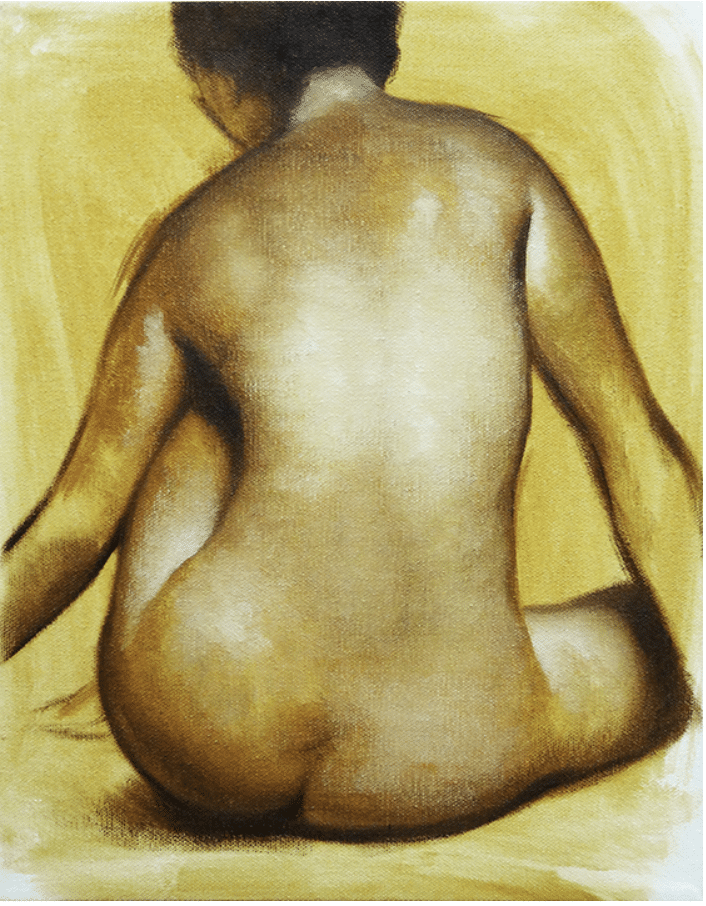
Daniel Maidman, Model Checking Cellphone, from the artist’s In the Studio series.
For better or worse, direct observation, as in plein air painting or working from the model, submerges you in sensory experience. It invites you to become intimate with your subject in a way that your phone’s camera cannot. It’s an opportunity (make that “challenge”) to discover your own feelings and ideas in the paint. It also invites you to become intimate with bugs and sand getting in your painting and the wind blowing everything over, but that’s a subject for a different day ☺
Perhaps it’s a question of which skills you want to develop and why. In terms of development, there are certainly skills you can develop from painting from photo references, and others you can nurture more easily, such as design, drawing, memory, and imagination, by painting from life.
But the debate over which is “better” overlooks the ultimate goal of painting; in the end, what’s really important is not the amount of detail or the level of abstraction. There’s no inherent value in “faithfulness” to what’s visibly there unless it’s a commission or an illustration of some sort.
It’s the quality of the artist’s involvement in the subject and the amount of mind, heart, and soul he or she gets into the painting – by any means necessary – that matters most.
If you’re interested in learning new skills related to drawing and painting from life, for the figure check out Daniel Maidman’s video Enhanced Life Drawing, for landscape, John Stobart’s Simplifying Outdoor Painting, and for portraits, Joshua Fallik’s Portraits From life.

